We ask about oloroso versus PX and American versus European oak. We obsess over cask seasoning, first-fill, second-fill, solera systems, and the precise microclimate of a bodega in Jerez. But bourbon casks? You’ll be lucky to get more than “American oak, ex-Heaven Hill maybe?”
Compared side-by-side, it seems a curiously shallow dismissal. Bourbon barrels comprise the backbone of the whisky maturation market, yet there’s so little discussion about where those barrels came from. What kind of bourbon did they hold? What was the mash bill? How were they toasted or charred? Were they shipped or rebuilt?
This two-parter dives into the subject. In part one, we speak to a couple of whisky producers who explain why they feel the industry doesn’t treat bourbon barrels with the respect they deserve. In part two, we speak to one of the people who knows the inner workings of this market better than almost anyone: Martin Purvis of Kelvin Cooperage.
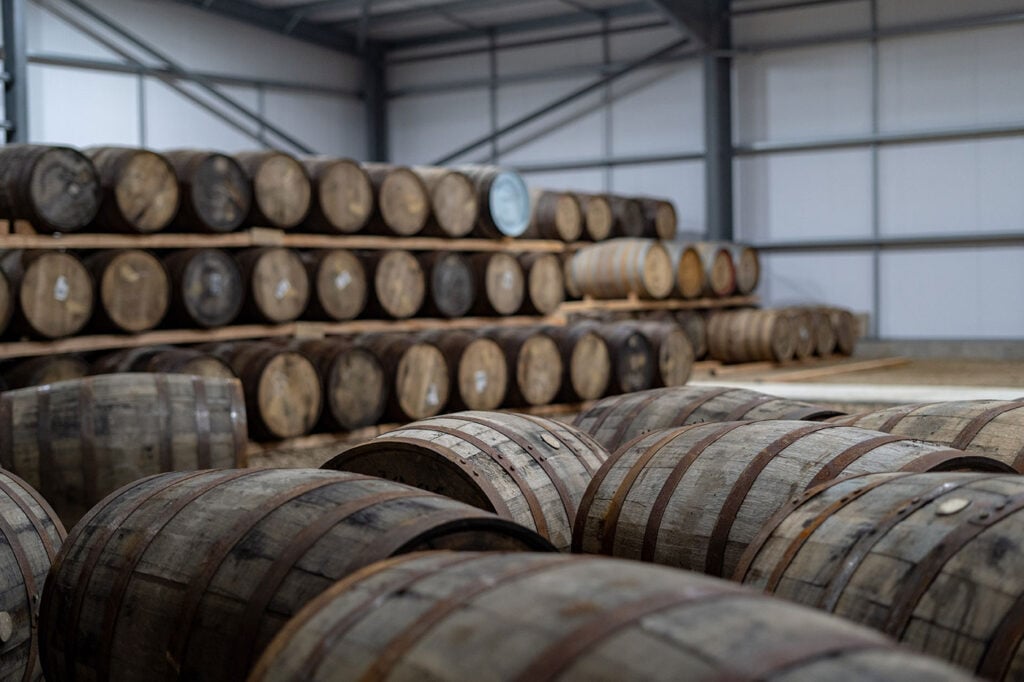
Why don’t we care about bourbon casks?
Part One: The Producers
There’s a growing awareness among new wave distilleries that bourbon casks are treated more like a commodity than a complex flavouring tool. While a few distillers are scrutinising casks right down to the cellular level, many are still treating bourbon barrels as generic flavour vessels. Good for vanillin and a bit of coconut, but not worth interrogating much further. That mindset, argues Alasdair Day of Isle of Raasay, is fundamentally flawed.
He reckons the Scotch whisky industry is still largely ambivalent about bourbon barrels. “Some love every detail of the barrel, from where the oak grew to how long the timber was air dried,” he says. “But others just want barrels as cheap as possible, with no interest in any other details.”
David Ferguson at Lochlea agrees, but sees it partly as a structural issue. Bigger distilleries, he says, don’t always have the luxury of choice. “Smaller producers can afford to be more selective,” he explains. “But if you’re dealing in volume, you’re likely sourcing from multiple cooperages just to keep up with demand. That makes granular control harder.”
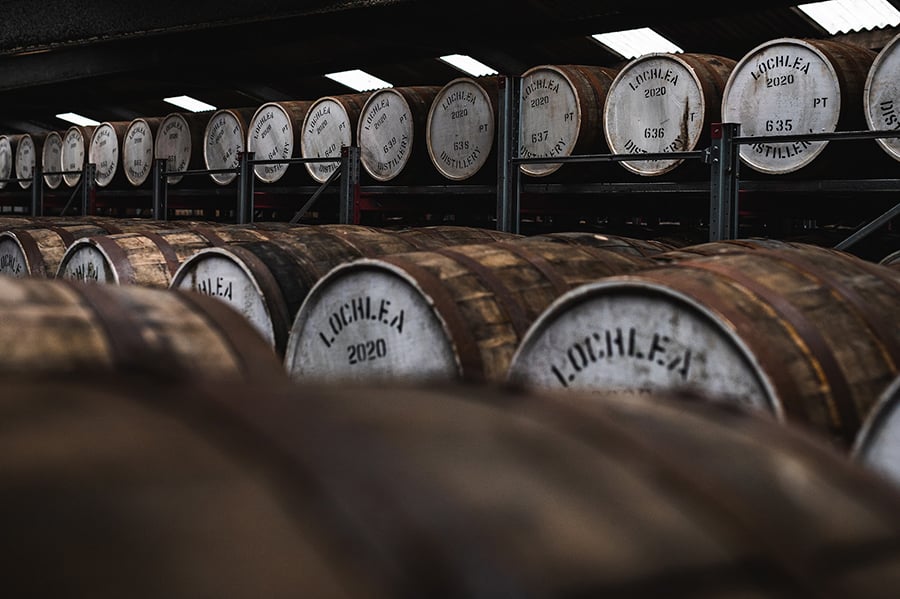
Lochlea Distillery’s warehouses were former cattle sheds
What does best practice actually look like?
Day wants to know as much about the provenance of the barrel as he can find out. It’s not just about the previous spirit. Raasay wants the full life story of the cask: oak species (typically Quercus alba), drying method (kiln or air, and how long), toasting and charring levels, mash bill details, fermentation type, and even whether the barrels were shipped wet or broken down into staves.
“We worked with Sagamore Spirit in Maryland and took their rye barrels directly to Raasay,” he adds. “Mash bills of 52% and 95% rye, including some oloroso-seasoned rye casks. That level of detail gives us flavour control.”
Lochlea takes a similarly meticulous approach. “We go direct to the producer,” Ferguson explains. “Our bourbon barrels are loaded up fresh in Kentucky and shipped straight to the distillery. They arrive practically steaming.”
Traceability matters to Lochlea, and not just as a marketing line. The distillery grows its own barley, so it makes sense to treat cask sourcing with the same rigour. Ferguson finds it baffling that whisky fans demand chapter and verse on sherry or wine casks but treat bourbon casks like a uniform category. “There’s a perception that they’re all very similar,” he says. “They’re not.”

Raasay is a distillery that wants traceability for its bourbon casks
So what details do producers actually want?
So what can a producer ask for? What’s the cask equivalent of knowing where every grape came from in your wine? Here’s what Day said is at the top of the wishlist:
Oak species: White oak is most common, but not the only player in town (once you know your Quercus muehlenbergii from your Quercus garryana, there’s no turning back.)
Drying method: Air-dried wood behaves differently from kiln-dried. Time matters too. How long was it air-dried for?
Toasting and charring: It’s not just about setting it on fire and calling it done. How it’s toasted, how deeply it’s charred, and what equipment was used all make a difference.
Spirit provenance: What distillery? What mash bill? What fermentation method? Was it a sweet mash or sour mash?
Maturation history: How long was the bourbon in there? What release was it bottled for?
Transport and handling: Was the barrel shipped whole or broken down? If rebuilt, were original staves reused or grabbed from a general stave pile? If so, where and when was the barrel re-coopered? Were the individual staves identified and re-coopered into the original cask? Or were any staves used from a large pile of staves to recooper the barrel? If so, were there only bourbon staves used or could there have been staves from different distilleries or even sherry or wine staves used to re-cooper the barrel? How much attention to detail was there in the recoopering of the barrel?

There are so many layers to every cask
Why don’t whisky drinkers know this?
It’s not about apathy, it’s about access. Most of this information never makes it to the label, never hits the marketing blurb, and never reaches the consumer. It doesn’t really occur to most of us, even within the industry, to ask many questions because we tend to treat all bourbon casks as equal.
“I don’t think the average whisky drinker knows any more than ‘it was matured in a bourbon barrel’,” says Day. “Or worse, just ‘American oak’. That’s all they’re told.”
Ferguson sees it as an industry failure. “We’ve grouped all bourbon barrels into one bucket because it’s easier. But consumers are asking tougher questions now. They want transparency. They want to know how every part of the process affects flavour, and this is one area we’ve been far too quiet on.
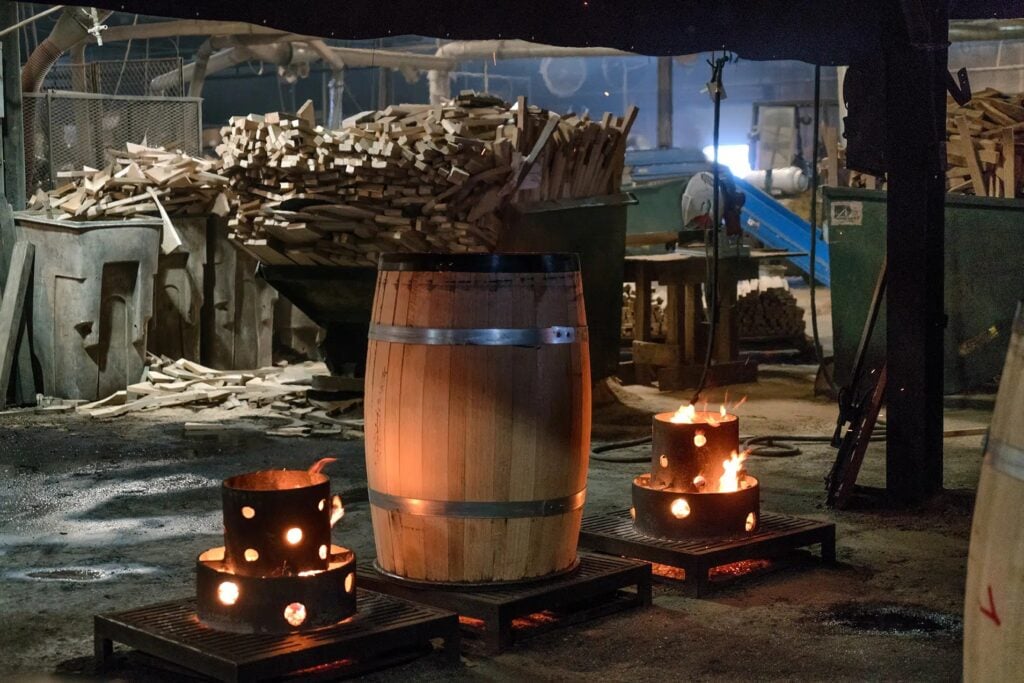
Let’s go inside Kelvin Cooperage to learn more
Part Two: The Cooperage
We talk a lot about casks in whisky, not so much the nuts and bolts of how they actually get here. Because behind every good dram matured in bourbon oak is a tangle of logistics, negotiation, repair work, and pure chance. And someone, somewhere, has to make sense of it all.
For us today, that someone is Martin Purvis, who’s spent nearly two decades embedded in the technical and commercial wood supply chain. He’s seen the bourbon barrel market from both the Scotch side (formerly at William Grant & Sons) and now from the American heartland, as part of the team at Kelvin Cooperage, one of the few US cooperages with a foot in both the bourbon and Scotch camps.
Purvis’s take? The bourbon barrel market is a brilliant mess, and most people, even inside the industry, barely understand how it works.
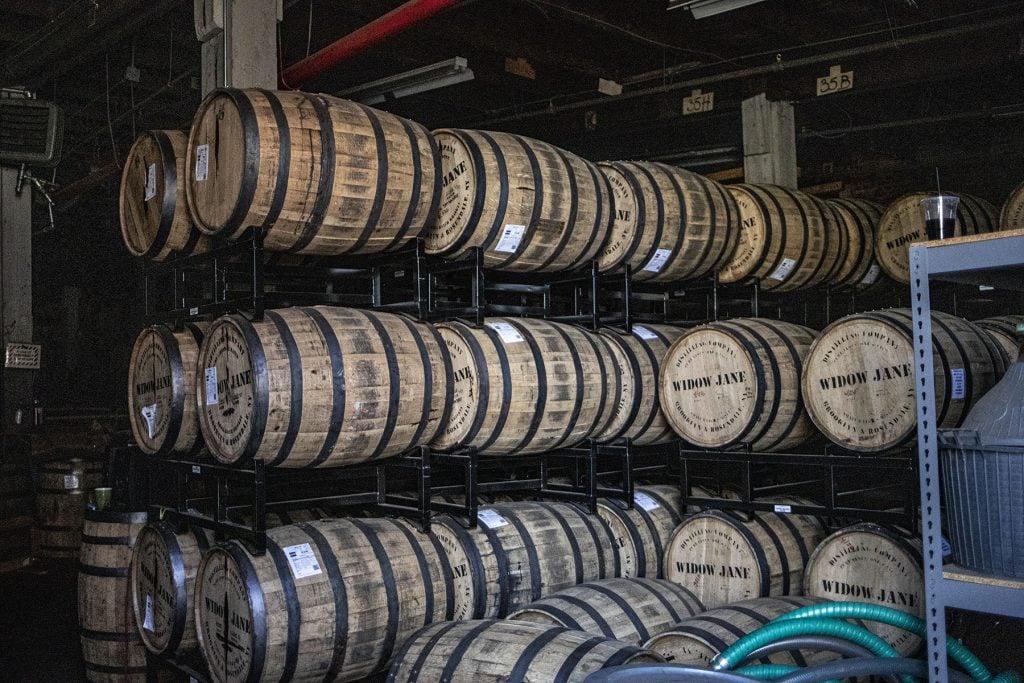
Barrels are funny things. You never know what you’re going to get
Bourbon casks: just another commodity?
Let’s start with a hard truth. For most of the supply chain, bourbon barrels are treated less like flavour-delivery systems and more like widgets. Used once, sold on. Simple as that.
“You just need a willing buyer and a willing seller,” says Purvis. “It’s no different to any other commodity. Bourbon distilleries are legally required to use new oak, so when they empty their casks, they roll them off the troughs and out the door. Those are what we call distillery runs, or d-runs. Most people buying bourbon casks in Scotland or Ireland are buying d-runs.”
Sounds straightforward. But here’s the catch: up to half of those d-runs wouldn’t meet the quality specs of most decent whisky producers. Cracks, warped staves, broken ends… the rigours of Kentucky warehouse heat and humidity aren’t gentle. The barrels flex, expand, contract, dry out, and split. Many arrive in Europe barely holding together.
And not everyone in the Scotch or Irish industries has the systems or the experience to tell the difference. Some barrels will simply leak. Others will underperform. Some won’t even make it to being filled.

Most barrels are supplied via a cooperage like Kelvin or Speyside
Enter the cooperage
This is where cooperages like Kelvin come in: part repair shop, part quality control, part barrel whisperer. “We buy d-runs in volume,” explains Purvis. “We sort through them, select the good ones, and repair the rest to meet the specs of our customers.”
Not all cooperages run the same. Some are highly technical operations, equipped to rebuild barrels to precise standards. Others are more basic, focused on volume rather than detail. And then there are the brokers, financial middlemen who don’t own a cooperage or fix anything themselves. “They buy bulk and sell bulk,” says Purvis. “They’re fine when supply is loose, but they disappear quickly when things tighten up.”
For distilleries serious about cask quality, choosing your cooperage – and your supply chain – matters just as much as choosing your barley or yeast strain.
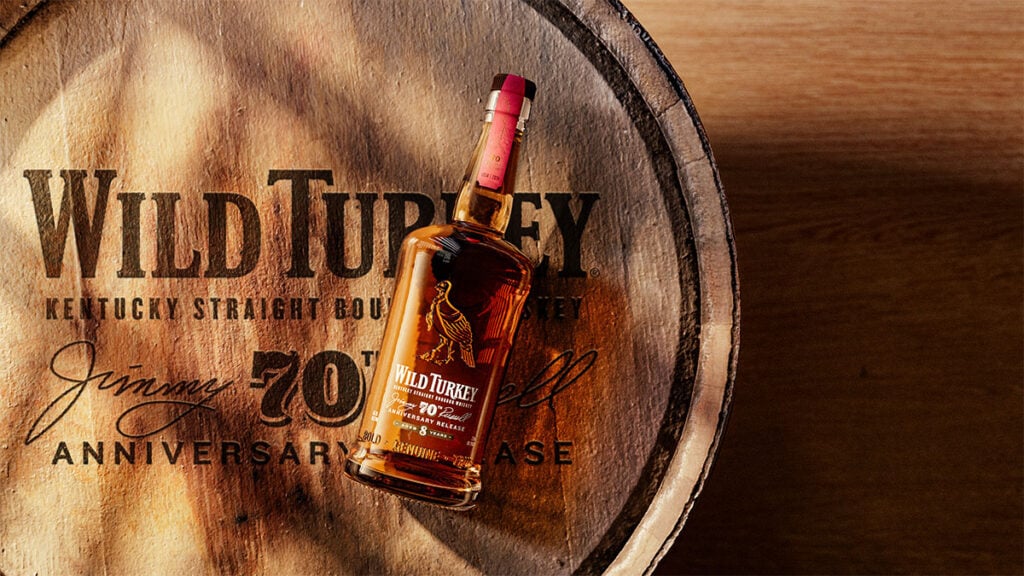
Requesting specific barrels is simpler said than done
Can you request a specific type of bourbon barrel?
In theory? Yes. In practice? Good luck.
“You can have any specification you want as a customer,” says Purvis. “But that doesn’t mean it’s sensible. Or available.”
Say you want barrels from a single distillery – Wild Turkey, for example – and only those that held six-year-old bourbon, with a heavy toast and medium char, using 36-month air-dried oak. It’s not impossible. Kelvin might be able to fulfil a small order like that, maybe 200 barrels, tops. “But try ordering 2,000 like that and it’s just not happening,” he says.
Most of the time, barrels arrive mixed, unsorted, and unlabelled. No brand. No maturation age. No marking of the toast or char level. That information rarely travels with the barrel unless you’ve arranged direct-from-distillery collection. Even then, the specifics might get lost in transit. When you’re buying in volume, it’s more about averages and best guesses than precise provenance.
This is why many distilleries focus more on cooperage partnerships than one-off sourcing. Work with a cooperage you trust, set a realistic spec, and they’ll get you barrels that meet your flavour and structural needs. But probably not your fantasy of ultra-specific single-origin casks on a 10,000-barrel scale.
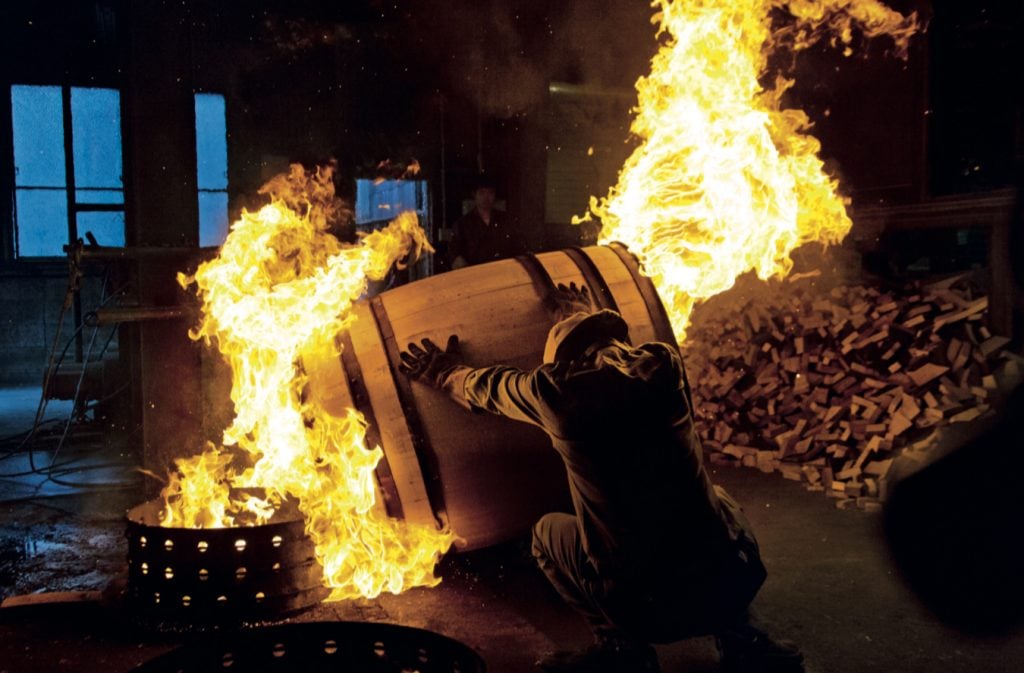
This is what toasting looks like. Don’t panic.
What happened to flat-packing and rebuilding?
Once upon a time, hogsheads were often rebuilt from bourbon barrels, shipped flat-packed from the US. It saved money on shipping, but required skilled reassembly. That practice has all but vanished.
“The economics just don’t add up anymore,” says Purvis. “You save on space, yes. But you’ve got to pay for dismantling the barrels in the US, then you need a cooperage in Scotland to rebuild them. That labour and logistics cost outweighs the shipping savings. So now, barrels are shipped whole, stacked into 30- or 40-foot containers and ready to fill on arrival.”
This has led to the increasing standardisation of the industry. Traditional hogsheads, once ubiquitous, are slowly being edged out by standard US barrels that arrive intact and ready to roll. Which is a shame for those who love a hoggie. But that’s for another article.
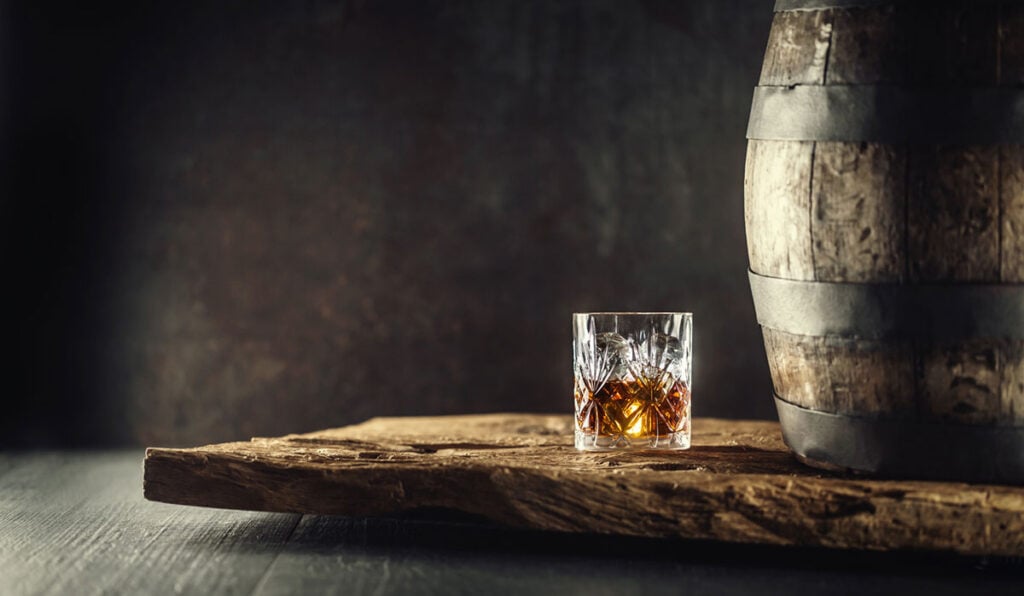
Every barrel is different
So where does flavour come from?
If the barrels are all broadly similar, surely they all perform similarly in maturation? Not quite. The science gets murky here.
Take charring and toasting. “The char doesn’t give you flavour,” says Purvis. “It gives you filtration. The toast underneath is where the flavour comes from. And how you toast matters – gas burners, infrared, oak fires… we use traditional oakwood fires at Kelvin for a long, slow toast before charring.”
Most importantly, every barrel is different. Even every stave. If every tree is an individual, and we know they are because trees grow at different rates, in different soils, with different grain patterns and chemical compositions… then naturally every barrel is too. Then, when you expose them to heat, they break down in unique ways.
“You could have 200 barrels from the same distillery, filled with the same liquid, and they’ll still behave differently,” he explains. “Some will be fantastic. Some will be average. A few might disappoint.”
It’s why single barrel bottlings are so tricky and why consistency in a batch release is an underrated skill.
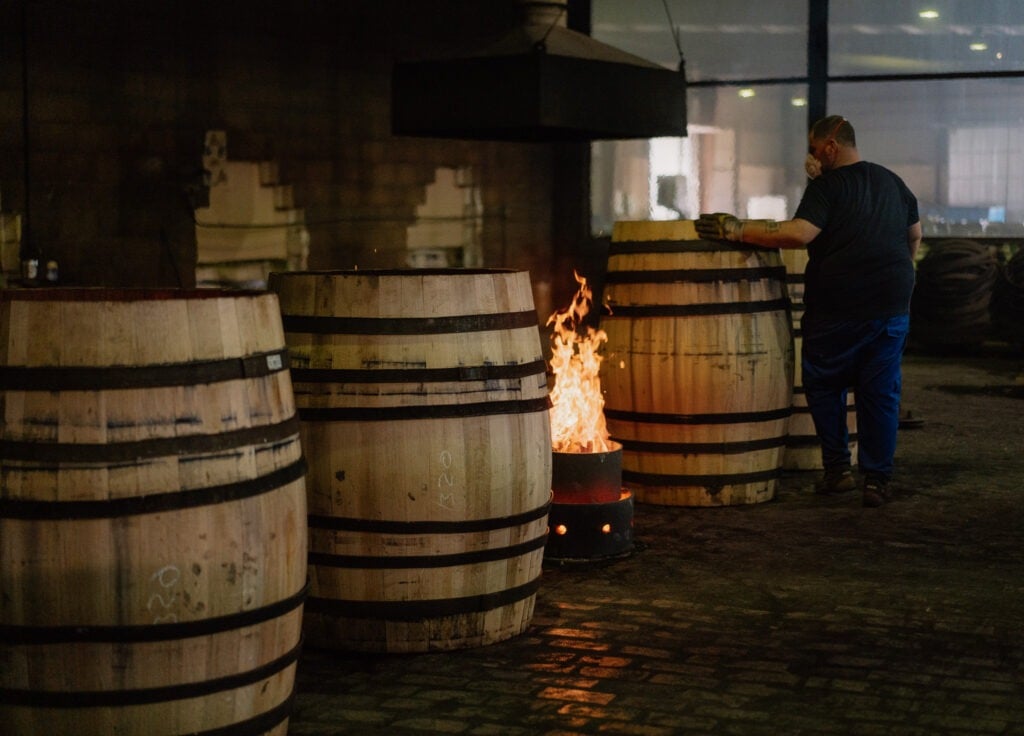
The sherry cask market has its own complications
The things nobody talks about
There’s also a layer of operational detail that rarely gets mentioned in polite company, things like rinsed barrels. Some large bourbon producers now rinse their barrels with demineralised water after emptying them. It reduces bourbon carryover and makes the casks easier to handle in hot climates.
Some producers prefer them rinsed because it gives a lighter wood influence. Others insist on “wet” barrels for maximum flavour extraction. But many have no idea which they’re getting. “We’ve got customers who specify non-rinsed,” says Purvis. “Others want them rinsed. Others don’t know it’s even a thing.”
And it’s not just flavour and structural integrity at stake; there are commercial factors too. Bourbon cask supply is deeply tied to bourbon consumption. If fewer people drink bourbon in the US, fewer casks come to market. And that affects everyone, from Mull to Melbourne.
“There’s a scramble right now,” says Purvis. “Strong global demand for casks, but a finite supply. That drives up prices. But if demand drops? Prices come down. It’s all driven by imperfect market dynamics.”
Add in strikes, production delays, brand ownership (Diageo has Bulleit and Dickel; Campari has Wild Turkey; Chivas has its own bourbon brands etc.), and you’re left with a market full of pinch points and power plays.

Whisky barrels are a whole industry unto themselves, and it’s got its complexities
So what does the average whisky fan understand?
Not much. And that’s not a slight, it’s a symptom of how opaque the system is. “Honestly, most people don’t have a clue,” Purvis admits. “Even within the industry, there’s confusion.”
The irony? The sherry cask market is even more complicated, but that’s a story for another time. At least with bourbon, you’re starting with something that actually held spirit for several years. A lot of sherry-seasoned casks never saw a bodega.”
The Last Drop: Why don’t we care about bourbon casks?
The bourbon cask supply chain is messy, manual, and maddeningly inconsistent. But it’s also where the magic starts. These barrels might arrive cracked, unlabelled, and anonymous, but handled properly, they become the quiet workhorses of world-class whisky.
Understanding the complexity behind sourcing, repairing, and flavour profiling bourbon casks is the first step towards giving them the credit they deserve.
And if you’re still lumping them all into one vague “American oak” box… well, you’ve missed the stave.
